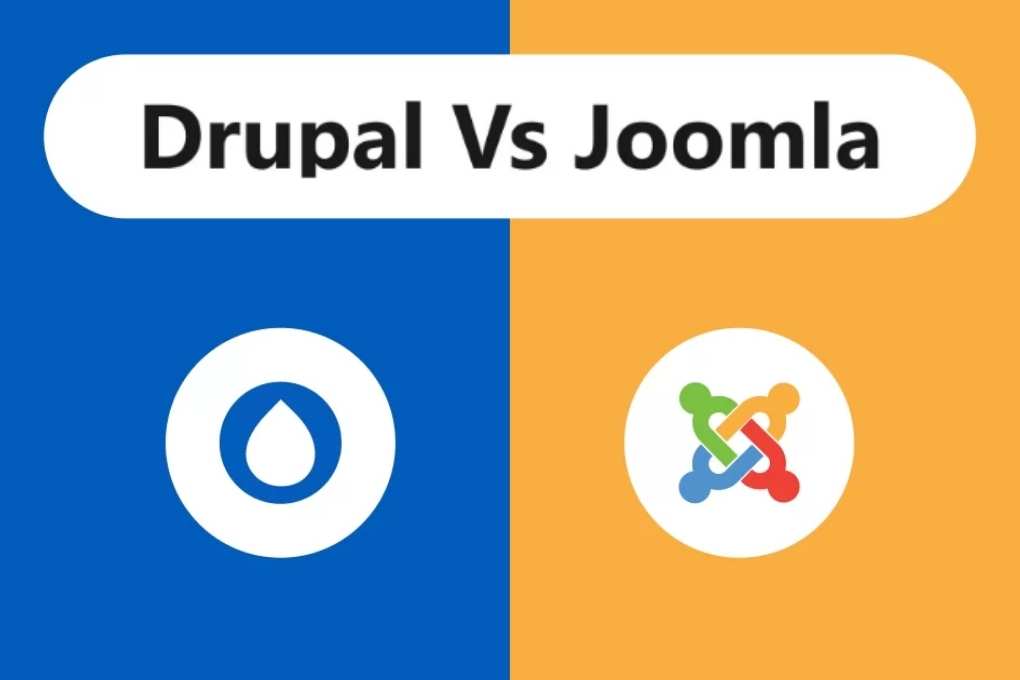When comparing Drupal and Joomla as content management systems (CMS) for websites, it’s important to consider their pros and cons, as well as their ease of use. Both platforms have their strengths and weaknesses, and the choice between them largely depends on the specific needs of the website and the technical expertise of the user.
Drupal
Pros:
Flexibility: Drupal is known for its flexibility and ability to handle complex, content-heavy websites. It’s highly customizable and can be used to build diverse types of websites, from personal blogs to enterprise applications.
Scalability: Drupal is well-suited for handling large volumes of content and high traffic. It can efficiently manage complex data structures and handle a large number of concurrent users.
Security: Drupal has a strong security track record and is well-regarded for its robust security features, making it a preferred choice for organizations with stringent security requirements.
Cons:
Steep Learning Curve: Drupal has a reputation for being more complex and challenging to learn, especially for beginners and non-technical users. Its advanced features and extensive customization options can make it intimidating for newcomers.
Resource-Intensive: Building and maintaining a Drupal website may require more resources, both in terms of server requirements and development expertise, compared to other CMS platforms.
Limited Themes and Extensions: While Drupal offers a wide range of modules, themes, and extensions, it may have fewer options compared to other CMS platforms like Joomla.
Ease of Use:
Drupal’s interface and administration can be more complex for beginners, and customizing the platform requires a good understanding of its architecture and terminology. However, for experienced developers and users familiar with its intricacies, Drupal can be a powerful and flexible CMS.
Joomla
Pros:
User-Friendly Interface: Joomla provides a more user-friendly interface compared to Drupal, making it more accessible to beginners and non-technical users. It offers a balance between robust features and ease of use.
Extensive Extensions: Joomla has a wide range of extensions, templates, and plugins available, allowing users to easily extend the functionality of their websites without extensive coding knowledge.
Community Support: Joomla has an active and supportive community, which can be valuable for obtaining help, resources, and guidance for users at all skill levels.
Cons:
Limited Scalability: While Joomla is suitable for small to medium-sized websites, it may face scalability challenges when handling extremely large or complex websites with high traffic and intricate data structures.
Security Concerns: Joomla has faced some security issues in the past, and users need to be vigilant about keeping their websites and extensions up-to-date to mitigate potential security risks.
Customization Limitations: Joomla’s architecture may not be as flexible as Drupal’s, and users may encounter limitations when trying to implement highly customized or complex website structures.
Ease of Use:
Joomla is generally considered more user-friendly than Drupal, with a more intuitive interface and easier learning curve. It can be a suitable choice for users who prioritize ease of use and a balance between functionality and simplicity.
Conclusion
When choosing between Drupal and Joomla, consider the specific needs of your website. If you require a highly flexible, scalable, and secure platform for complex websites, Drupal may be the better choice despite its steeper learning curve. On the other hand, if ease of use and a strong community support system are your priorities, Joomla could be the more suitable option for your needs.







